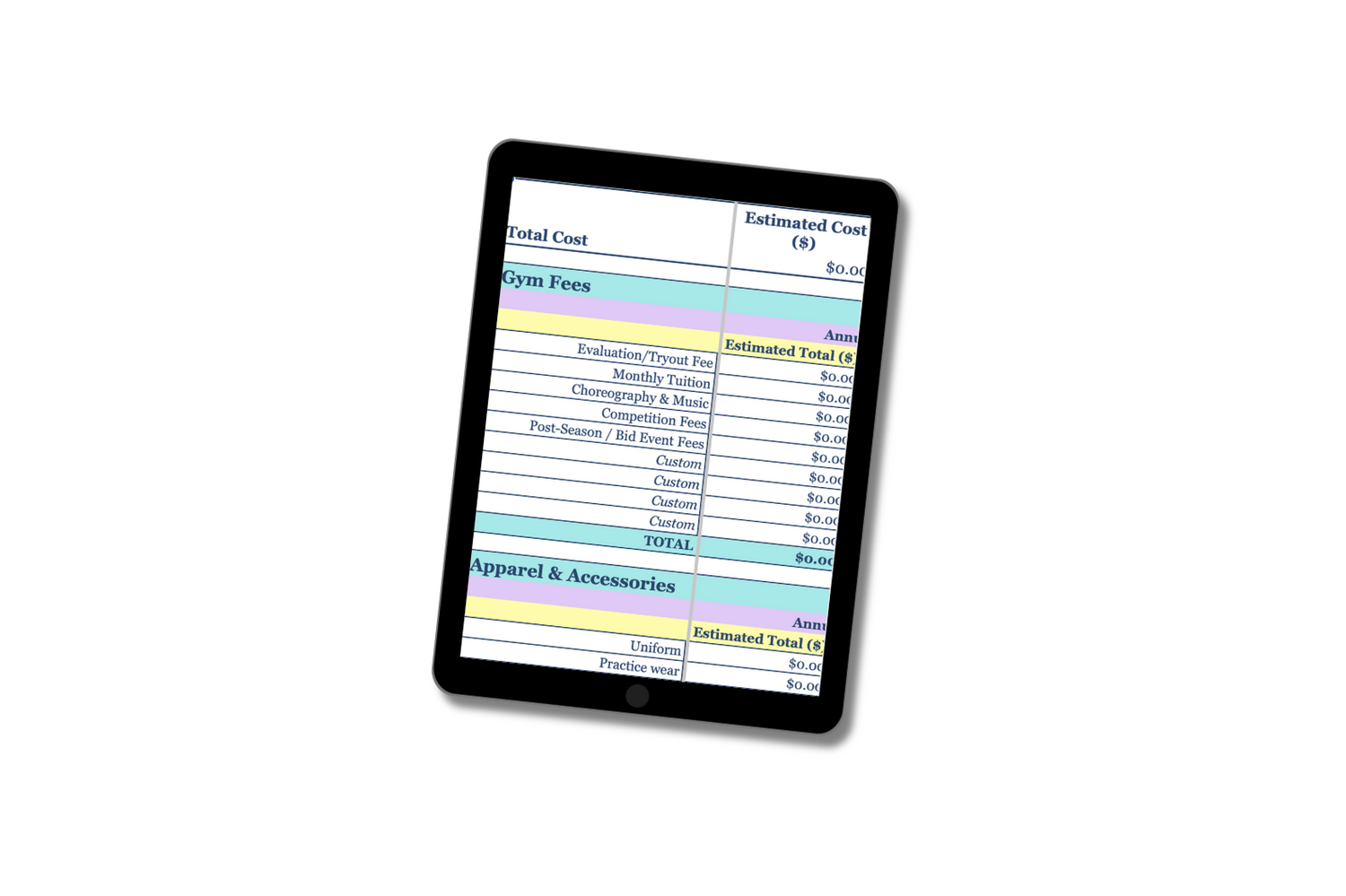
Cheer Costs Got You Talking Money With Your Athlete? Start Here.
Share
If you're asking your cheerleader to help cover part of their cheer expenses this season, you're not alone—and you're not a bad parent for doing it. In fact, you might be giving them one of the most valuable lessons they'll ever learn: how to plan ahead and take ownership of their finances.
But here’s the tricky part: most teens have no idea where to start. That’s exactly what one athlete asked me recently.
“I am helping my parents pay for cheer this year, they have asked me to help contribute for the trips! I am looking for an easy and free way to budget out my money”
She was enthusiastic and already committed to contributing (LOVE that). But budgeting just isn’t something most teens are taught, especially not in the high-cost world of competitive cheer.
So I gave her a simple, free plan. No complicated spreadsheets. No financial jargon. Just a clear starting point.
Here’s what I shared—feel free to pass this along to your own athlete.
Step 1: Rewind to Last Season
If you're returning to the same gym, chances are the schedule this season will look pretty similar. Have your athlete sit down and list out all the travel competitions from last season.
For each competition, they should write down:
- 📍 The event name and location
- 🛏️ How many nights your family stayed in a hotel
- ✈️ Whether you had to fly (and how many family members flew)
- 💰 A rough estimate of how much the trip cost your family (you will probably have to help them with this part!)
This doesn’t have to be exact. The point is to help them see the big picture—and get a realistic sense of what each trip costs.
Step 2: Set Realistic Expectations Together
Before your athlete can start saving, it’s crucial to have an honest conversation about how much they’re expected—or able—to contribute.
Some questions to guide that conversation:
- How much of each trip’s cost do you want them to cover? (A flat amount? A percentage?)
- How much time do they realistically have to earn money during the week or season? Summer is a great time for part-time jobs while school is out and cheer may be their main responsibility.
- Are there family contributions already built in—like covering flights or hotel—so the athlete can focus on one specific expense?
Here’s why this matters: unclear expectations lead to frustration. A teen might feel like they’re failing if they only save $75 for a $400 flight… unless you’ve already agreed that $75 is their goal.
By setting a realistic target together—one that fits their schedule, age, and earning ability—you’re giving them a win they can actually reach.
Step 3: Break It Down into Envelopes
Once they know what to expect, introduce them to the envelope method. Here’s how it works:
- They create one envelope (physical or digital) for each competition.
- On each envelope, they write the comp name and their savings goal (ex: “NCA – Save $100”).
- As they earn money from a job, babysitting, chores, or birthday gifts, they divide it between envelopes--or they can work on filling one envelope at a time.
This gives them a tangible, goal-based way to save. It’s simple. It’s low-pressure. And it puts them in control.
Step 4: Check Progress & Celebrate Wins
This step is crucial: celebrate the progress, not just the end goal.
Did they save their first $25 towards a comp? Amazing.
Did they decide which competition to prioritize first? That’s financial planning in action.
You’re not just helping your athlete build a cheer travel fund—you’re giving them the opportunity to develop confidence, discipline, and money smarts that will last long after this season is over.
Final Thoughts
It’s not always easy to talk money with your kids—especially when it comes to something as emotional and important as cheer. But this conversation can actually bring you closer.
When athletes take responsibility for part of their expenses, they don’t just show up differently on comp day. They grow up a little—and that’s something worth celebrating.
You've got this!
Cheers,
Lexie

